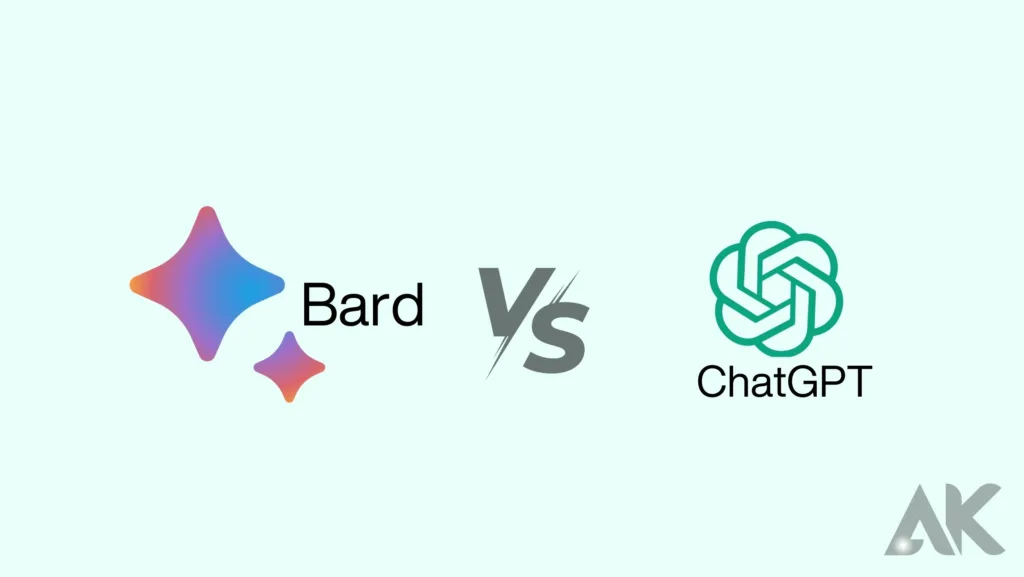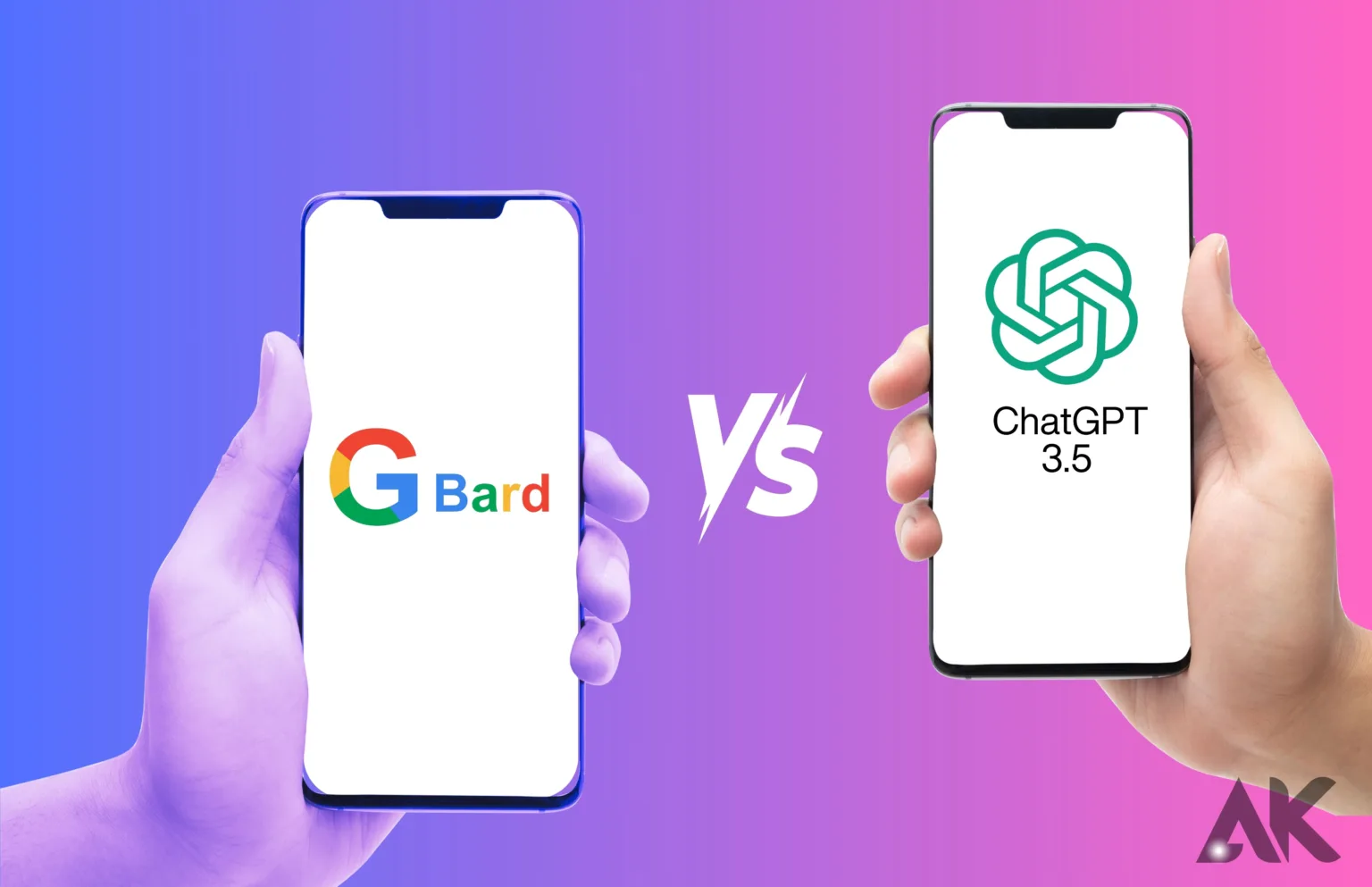Google Bard vs ChatGPT 3.5: Since OpenAI made ChatGPT available to the general public, we’ve all seen the excitement around it. You are likely among its 100 million users; I certainly am. I’ve sent letters I’d rather not write, received Google Sheets formulae I couldn’t work out on my own, and generated content ideas for articles using the AI chatbot.
I’ve mastered the art of crafting prompts to provide optimal results, but I’m acutely conscious of ChatGPT’s limits. For instance, the more potent GPT-4, which can search the web and produce AI pictures, is exclusively available to users who have paid for access.
Google Bard vs ChatGPT 3.5 in basic
Fundamentally, both chatbots work based on natural language processing, whereby users input a prompt or question and the chatbots provide a response that sounds human.

A few significant distinctions exist, though, and they primarily relate to the models used for training and the availability of the AI chatbot itself (ChatGPT is available in 164 countries and territories and offers nine languages, while Bard is available for free in over 40 languages and over 230 countries and territories).
Here’s a brief comparison of ChatGPT and Bard, although I’ll go into more detail about some of their key differences in the following parts.
| Bard | ChatGPT | |
| Creators | OpenAI | |
| Language model | Pathways Language Model (PaLM 2) | OpenAI’s GPT-3.5 ( ChatGPT Plus : GPT-4) |
| Data sources | Bard can do web searches and was trained on Infiniset, a data set that included Common Crawl, Wikipedia, documents, and online discussions and dialogues. | The enormous corpus of text used to train ChatGPT included Common Crawl, Wikipedia, books, articles, papers, and information scraped from the public internet. The sources for the GPT-3.5 model, which is free, expire in 2021, however, GPT-4 can be used for online searches by ChatGPT Plus members. |
| Pricing | Free | Free: ChatGPT Plus is available for $20/month |
Bard allows for the modification of questions and answers.
The only method to change a response in ChatGPT is to ask it again, this time providing more details about how you would like it to amend its response.
Alternatively, you may provide ChatGPT unique instructions to have it automatically take into account your preferences (e.g., a shorter response vs a longer one) without requiring you to type it out in the prompt each time.
Alternatively, Bard allows you to easily change the length or tone of each response without requiring you to type in a new prompt. To revise, just click the Modify answer icon, which resembles a stack of horizontal bars, and choose from the following options: shorter, longer, simpler, more informal, or more formal.
ChatGPT’s integrations are more powerful.
While Bard and ChatGPT both support direct app connections, their methods differ slightly.
Bard leverages Bard Extensions to get real-time data from other Google applications, such as YouTube, Gmail, Google Drive, Hotels, Flights, and Maps. This implies that you may do actions like asking Bard to look out for low-cost flights for your next vacation or extracting information from a Gmail email confirmation without ever having to leave the conversation.
It’s similar to what ChatGPT does but with plugins. On ChatGPT, you may pick from a wide variety of plugins and have them function together. For instance, you may use the Wolfram plugin to acquire an exact calorie count, ask the AI to suggest a dish, and then ask it to make a shopping list using the Instacart plugin.
Furthermore, ChatGPT isn’t limited to the Google environment in this way. Regardless of your tech stack, you can integrate ChatGPT with thousands of other applications and incorporate ChatGPT straight into your current processes with Zapier’s integration. See these processes to get started, or learn more about how to automate ChatGPT.
You cannot share discussions with photos on ChatGPT.
Everyone with access to the discussion will be able to see and download the picture if you post it to a chat using Bard and then share the entire message.
You won’t be able to share a picture you post to a ChatGPT session. Alternatively, you might capture or copy the answer. Images shared during discussions are not yet supported.
Bard offers a better user experience overall
Bard and ChatGPT appear to have comparable characteristics at first glance:
- Text formatting. Both AI chatbots automatically arrange their replies using headers and bolded text to make them simpler to read through.
- Chat history. Each chatbot’s home page has a side panel where all interactions are automatically handled and saved for further use. You may completely disable the conversation history storing feature for both chatbots.
- Quick-action buttons. With a single click, you may share discussions and indicate which responses you like or hate (to help with future replies).
- Data sources. If asked, Bard can offer a list of pertinent references for its text replies. What’s interesting, though, is that Bard will automatically cite the source of a picture that it pulls from the internet. ChatGP is limited to citing sources while it is utilizing the GPT-4 web browser version.
ChatGPT attempts to be helpful by giving you a list of references to confirm its response if you ask it to cite its sources using the GPT-3.5 model. For instance, it recommended that I consult “reputable field guides on birds of prey, ornithology textbooks, or websites dedicated to birdwatching and bird identification” when I asked it to list its sources about kestrels.
Conclusion
Artificial intelligence (AI) chatbots Google Bard and ChatGPT 3.5 operate on natural language processing, allowing users to submit questions or instructions and receive a response from the chatbot that sounds human. The models utilized for training and the availability of the AI chatbot itself are the main areas of distinction between the two chatbots, though, since they differ significantly.
FAQ
Is Google’s new AI better than ChatGPT?
The search engines Google and ChatGPT are separate technologies used for distinct purposes. Google searches the Internet to deliver relevant results, whereas ChatGPT creates conversational messages. ChatGPT generates replies to user inputs that resemble those of a human using deep learning and a transformer architecture.
Which AI is better than ChatGPT?
Essential Features of ChatGPT Alternatives. The Top 12 Alternatives to ChatGPT You Should Use in 2023. Press Up. Writesonic. Take.ai. SpinBot. Jasper Talk. AI Bard. YouChat. Otto. Microsoft AI Bing. OpenAI Simulation. Confound AI. Claude.

